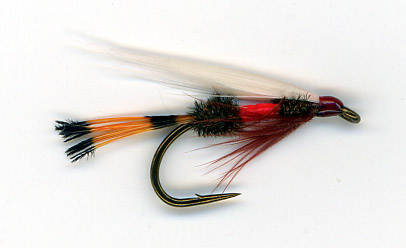Welcome to River Magic
Stillwater Slim on the Line... June 1, 2010
|
 Where to Turn?
I’m sure there are many very, very discouraged people in rural Nova Scotia communities following DFO’s announcement that, with the exception of Northumberland Strait rivers (including the Margaree) and the Baddeck and Middle Rivers, there will be no open salmon season, not even catch-and-release, for salmon angling in 2010. But attendance at the recent ZMAC meeting in Sherbrooke was excellent and certainly showed DFO our community’s concern.
So what does DFO’s decision mean to us? Well, compared to the $2.5 million that salmon angling contributes annually to the economy of Inverness County alone, Nova Scotia’s Eastern, South, and Fundy shore communities will get nothing. Only twenty years ago the St. Mary’s River hosted 300 – 500 salmon anglers every day of the salmon angling season, buying gas, accommodations, meals, supplies and services from local businesses. Although valuable attractions like Sherbrooke Village benefit our economy, they don’t tend to keep visitors in the area for days, weeks, or months. Salmon fishing did. And it will again this year in Inverness County.
Where to turn? Peering into the darkness, DFO has no answer, no recovery plan. However, to their credit, some DFO staffers finally seem to realize that we need a new strategy, and soon. Those with flashlights can see a few very bright spots in an otherwise dismal landscape. We’re looking at Nova Scotia’s Margaree, Newfoundland’s Exploit’s, and New Brunswick’s Nepisiguit Rivers as examples of how recovery could be achieved. What we need is an organization that can work with volunteer groups, DFO and Aboriginal communities to make it happen. And we have one!
The Eastern SportFish Association (ESA) is a new not-for-profit organization focused on uniting communities, cultural groups and related organizations within eastern mainland Nova Scotia whose primary objective is to develop and sustain the recreational sport fishery and provide economic and social benefit to residents of the region. Its long-term vision is to see the organization eventually become province-wide to make Nova Scotia a world-class sport fishing destination, as it was not so many years ago. The strategy is green (both environmental and economic) and a model for the future, contrasted with many other forms of development that threaten our environment and provide little benefit to rural communities.
The new organization will very soon hold a public meeting to discuss these ideas, elect officers, and other business. For more information, or to join ESA, see website, www.sportfishns.ca.
Our fly of the week’s origin, according to www.wikipedia.org, “The Royal Coachman was first tied as a traditional winged wet fly and is a derivative of the Coachman wet fly. Mary Orvis Marbury in her Favorite Flies and Their Histories (1892) tells the story of its creation as follows: The Royal Coachman was first made in 1878 by John Haily, a professional fly-dresser living in New York City. In writing of other matters, he inclosed [sic] a sample of this fly for us to see, saying: ‘A gentleman wanted me to tie some Coachmen for him to take up into the north woods, and to make them extra strong, so I have tied them with a little band of silk in the middle, to prevent the peacock bodies from fraying out. I have also added a tail of the barred feathers of the wood-duck, and I think it makes a very handsome fly.’ A few evenings later, a circle of us were together ‘disputing the fly question,’ one of the party claiming that numbers were ‘quite as suitable to designate the flies as so many nonsensical names.’ The others did not agree with him, but he said: ‘What can you do? Here is a fly intended to be a Coachman, yet it is not the true Coachman; it is quite unlike it, and what can you call it?’ Mr. L. C. Orvis, brother of Mr. Charles Orvis, who was present, said: ‘Oh, that is easy enough; call it the Royal Coachman, it is so finely dressed!’ And this name in time came to be known and used by all who are familiar with the fly. The Royal Coachman pattern is one of the very few patterns that appeared in Marbury's work that is still being tied and fished today in some form or another.”
Royal Coachman wet trout fly
Thread: UTC G.S.P. 50 Denier black thread Hook: Mustad 3399A Size 6 - 14 Body: Peacock herl, then red floss, then peacock herl Hackle: Coachman brown hen hackle Wing: Back to back strips of white goose shoulder Head: Black thread finished with glossy head cement
Please stay on the line … |